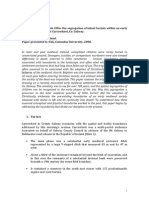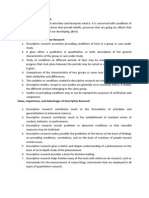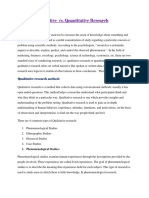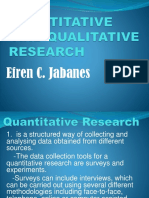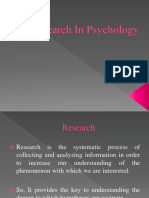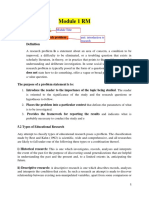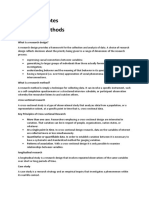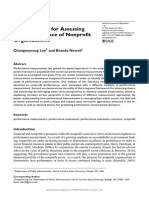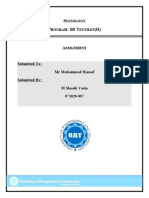0 ratings0% found this document useful (0 votes)
2 viewsNew Microsoft Word Document
New Microsoft Word Document
Uploaded by
Kaustubh UdamaleCopyright:
© All Rights Reserved
Available Formats
Download as DOCX, PDF, TXT or read online from Scribd
New Microsoft Word Document
New Microsoft Word Document
Uploaded by
Kaustubh Udamale0 ratings0% found this document useful (0 votes)
2 views4 pagesCopyright
© © All Rights Reserved
Available Formats
DOCX, PDF, TXT or read online from Scribd
Share this document
Did you find this document useful?
Is this content inappropriate?
Copyright:
© All Rights Reserved
Available Formats
Download as DOCX, PDF, TXT or read online from Scribd
Download as docx, pdf, or txt
0 ratings0% found this document useful (0 votes)
2 views4 pagesNew Microsoft Word Document
New Microsoft Word Document
Uploaded by
Kaustubh UdamaleCopyright:
© All Rights Reserved
Available Formats
Download as DOCX, PDF, TXT or read online from Scribd
Download as docx, pdf, or txt
You are on page 1of 4
1.
Social Psychology
2. Social Cognition
3. Social Perception
4. The Self
5. Attitudes
6. Causes and Cures of Stereotyping, Prejudice and Discrimination
7. Liking, Love and Other Close Relationships
8. Social Influence
9. Prosocial Behavior
10. Aggression
11. Groups and Individuals
12. Dealing with Adversity and Achieving a Happy Life
Altruistic- Acting helpfully towards others without obvious benefit to oneself.
An example of this might be chasing a stranger in order to return their wallet,
which involves no guarantee of reward.
Bystander- a Person who is present at, but may not be directly involved in, a
particular situation.
Confederate- n. Confederates are pretend research participants, who are
actually accomplices of the researchers. The actual participants are unaware
(until after the session is over) that the confederates are not bona fide
participants. Research with confederates is common in social psychology when
researchers wish to simulate a particular type of social situation to examine how
participants will react.
Conspecific- Member of the same species.
Cost-benefit model- Involves a decision-making process in which a person weighs
up both the advantages and disadvantages of helping. If it seems beneficial to
help, then the person is more likely to do so; if the risks are too great, they may
refrain.
Destructive obedience- Obedience that has potential to cause psychological or
physical harm or injury to another.
Diffusion of responsibility- n. A state in which an individual perceives his/her
own responsibility as less than usual because it is shared by a group of people.
This is the hypothesized cause of bystander effect, in which bystanders’
likelihood of acting to help after witnessing an accident, crime or other incident
depends on the number of other people who are also witnesses or believed to be
witnesses to the same incident.
Good Samaritan- This term originates from the New Testament in the Bible. It
refers to a story of a Samaritan (person originating from ancient Samaria) who
stops to offer help to an injured stranger.
Naturalistic observation-
Obedience- n. acting in compliance with a command or other directive such as
obeying the law.
White collar workers- Refers to individuals who work in professional
occupations, as compared to ‘blue collar’ workers which refers to those who
perform manual work.
Naturalistic observation- n. A research methodology that collects descriptive
data via observations of target phenomena occurring in their natural context (as
opposed to laboratory research). Naturalistic research involves watching target
behaviors, events or phenomena without interference from the researcher; as
such, naturalistic observation is one of the most common unobtrusive research
methods. The goal of naturalistic observation is to observe and record target
behaviors without influencing, controlling or manipulating the situation. For
example, a researcher interested in mating behavior may choose to observe
individuals interacting at a dance to examine social interaction in an environment
in which people do not know they are being studied. The advantage of this type
of approach is that people are not influenced by the research environment; the
disadvantage is that there are often ethical concerns with the observation and
recording of behavior without the consent of the individuals being studied.
Survey research- n. Survey research is a rigorous quantitative methodology
employed by social scientists to collect information that can be used to estimate
the characteristics of defined populations and/or test research hypotheses.
The varieties of survey research are highly diverse. Both cross-sectional and
longitudinal, or panel survey designs are common. Although most surveys are of
individuals, many other units of analysis are also examined, including social
networks, discrete and random events, and various organizational structures,
such as businesses, hospitals, schools and political jurisdictions. More complex
multilevel survey research, in which information is collected and organized at
two or more levels (e.g., from surveys of both employers and employees) is also
becoming commonplace. Survey research is routinely conducted using a variety
of different modes, including face-to-face and telephone interviews and self-
administered mail and Web-based questionnaires. Types of phenomena commonly
measured via survey include the behaviors, attitudes, opinions and other
qualities of the individuals or units being studied.
Surveys- n. Surveys involve systematically gathering information by asking
questions. Surveys typically involve questioning individuals but can also involve
organizations or institutions. Survey questions can be asked in telephone or in-
person interviews or via self-administered questionnaires completed on paper or
on an Internet Web site. Surveys typically involve gathering data from a sub-
sample of a larger population (often with the goal of surveying a representative
sample). Questions asked in a survey are also standardized (i.e., questions are
asked in the same way to each respondent), and responses to survey questions
are typically quantified into categories for aggregation and analysis.
Correlation- n. 1. The degree of relationship between two or more variables. 2. A
mathematical index of association between two or more variables.
Correlational method- n. A research approach in which two or more variables are
measured, usually in naturalistic settings, and the covariance (n. a mathematical
index of the degree of relatedness between two variables, most usually the
average of the product of the deviations of each variable from its mean) of the
variables is examined to find relationships between or among them. This
approach lacks the control of extraneous variables present in good experimental
research, and so casual are seldom properly made from correlational studies.
This approach is often made when experiment is impossible, ecological validity is
a primary concern, or ethical limitations prevent experimental research.
Correlational statistics- n. Any of a family of statistics that describe the
relationship between two or more variables.
Correlational study- n. A study of the relationship between two or more
variables, usually using correlational statistics to describe the relationship.
Correlation coefficient- n. A mathematical index of association between two or
more variables and usually a linear index scaled so that 0 indicates no
relationship, +1 indicates a perfect positive relationship, and -1 indicates a
perfect inverse relationship.
Independent variable- n. A variable controlled or manipulated by an
experimenter in order to observe the effect of the control or manipulation on
one or more outcome or dependent variables. Quasi-independent variables are
those such as sex or age that are treated as independent but are not under the
control of the experimenter.
Dependent variable- n. The outcome factor or variable of interest in an
experiment that is compared to determine whether differences exist between
experimental conditions as a result of manipulation or treatment conditions.
Within basic experimental design, changes in the dependent variable are
measured to examine the relative impact of another variable (independent
variable). For example, in an experiment to examine the impact of alcohol
consumption on memory, the researcher will vary the amount of alcohol
consumed (independent variable) to examine changes in memory (dependent
variable). The dependent variable is measured and compared in order to draw
conclusions about the relative impact of the independent variable.
Experimental methods- n. A system of procedures and materials used
systematically to investigate the relationships between controlled (independent)
variables and uncontrolled (dependent) ones.
Confounding- n. The process of an uncontrolled variable’s affecting the results
of an experiment such that no clear interpretation of the results can be made.
Mediating variable- n. A mediating variable explains how or why two variables are
related by specifying that the mediating variable transmits the effect of one
variable to another variable. There is a temporal relation such that the initial
variable is related to the mediating variable and then the mediating variable is
related to the outcome variable. Mediating variables may be observed measures
used in a statistical analysis, or they may be theoretical constructs that guide a
research project. One of the difficulties of research on mediating variables is
the development of accurate measures of theoretical mediating constructs.
Mediating variables are often considered once a relation between two variables
is established. Here the mediating variable provides an interpretation of the
relation between
You might also like
- Turbulent Advocate Superpowers - UnlockedDocument25 pagesTurbulent Advocate Superpowers - Unlockedtedhsu857No ratings yet
- Research MethodologyDocument19 pagesResearch MethodologyPriya KhannaNo ratings yet
- The Origins of The Irish Cillin: The Segregation of Infant Burials Within An Early Medieval Enclosure at Carrowkeel, Co. Galway.Document28 pagesThe Origins of The Irish Cillin: The Segregation of Infant Burials Within An Early Medieval Enclosure at Carrowkeel, Co. Galway.Brendon Wilkins100% (3)
- Sociological ResearchDocument21 pagesSociological ResearchAbdullah ShahidNo ratings yet
- Sociological ResearchDocument41 pagesSociological Researchkhumi1528No ratings yet
- Methods of Data CollectionDocument15 pagesMethods of Data Collectionafridiaamir616No ratings yet
- Research DesignsDocument7 pagesResearch DesignsShaelyn NoronhaNo ratings yet
- 2 - Sociological ResearchDocument36 pages2 - Sociological ResearchUsmanChaudhry100% (1)
- Research Methods in Psychology: Course Code: PSY-101 Instructor: Tehmina ZainabDocument50 pagesResearch Methods in Psychology: Course Code: PSY-101 Instructor: Tehmina ZainabAdnan AliNo ratings yet
- Reserach Methods 2Document44 pagesReserach Methods 222021554-017No ratings yet
- Research Methods in PsychologyDocument8 pagesResearch Methods in PsychologyHibo rashidNo ratings yet
- Qualitative ResearchDocument3 pagesQualitative ResearchF. Lagan Sr. Memorial National High School 301694No ratings yet
- Class 1Document8 pagesClass 1Abhijeet DashNo ratings yet
- 2 - Sociological ResearchDocument58 pages2 - Sociological ResearchArsalan NadeemNo ratings yet
- MPC-004 - 2020Document27 pagesMPC-004 - 2020Rajni KumariNo ratings yet
- Study Guide-Research MethodsDocument4 pagesStudy Guide-Research MethodsWasan ThamsuaideeNo ratings yet
- Concept of Sociological Research & MethodsDocument4 pagesConcept of Sociological Research & MethodsAun MakenNo ratings yet
- RM 4Document12 pagesRM 4Ankit SaxenaNo ratings yet
- Chapter 1 Social Psy NotesDocument8 pagesChapter 1 Social Psy NotesNigar HuseynovaNo ratings yet
- Concept of Sociological Research & MethodsDocument9 pagesConcept of Sociological Research & MethodsNasir NadeemNo ratings yet
- Correlation and DescriptiveDocument4 pagesCorrelation and DescriptiveAJ ALEJANNo ratings yet
- Intro To Psy CH 2Document24 pagesIntro To Psy CH 2raza032758No ratings yet
- Introduction To Social Psychology NotesDocument5 pagesIntroduction To Social Psychology Notesarunima2001No ratings yet
- Final Written ReportDocument6 pagesFinal Written ReportKitz TanaelNo ratings yet
- PR2 MidtermDocument5 pagesPR2 MidtermZedrick DoratoNo ratings yet
- Qualitative and QuantitativeDocument3 pagesQualitative and QuantitativeAbrar AhmadNo ratings yet
- Midterm - Psychological StatisticsDocument6 pagesMidterm - Psychological StatisticsrieNo ratings yet
- QUANTITATIVE Methods SEXTO MATERIA COMPLETODocument245 pagesQUANTITATIVE Methods SEXTO MATERIA COMPLETOJESLHY DELIANI TORRES BRAVONo ratings yet
- The Contribution of Quantitative and Qualitative Research MethodsDocument106 pagesThe Contribution of Quantitative and Qualitative Research MethodsShruti MishraNo ratings yet
- Community Research MethodsDocument5 pagesCommunity Research MethodsAsbah RafiqueNo ratings yet
- Definition and PurposeDocument6 pagesDefinition and PurposeHerrieGabicaNo ratings yet
- QuatitatievDocument13 pagesQuatitatievMonosodiumXOXONo ratings yet
- A Descriptive Study Is One in Which Information Is Collected Without Changing The EnvironmentDocument6 pagesA Descriptive Study Is One in Which Information Is Collected Without Changing The EnvironmentNadya AriscaNo ratings yet
- PR 1 Lesson 3Document6 pagesPR 1 Lesson 3cindy juntongNo ratings yet
- Classification of Research by MethodDocument2 pagesClassification of Research by Methodvitaloka siwi utamiNo ratings yet
- Descriptive Research DesignDocument13 pagesDescriptive Research Designqueen abadzNo ratings yet
- Quantitative Research - Definition, Methods, Types & ExamplesDocument10 pagesQuantitative Research - Definition, Methods, Types & ExamplesIsrael PopeNo ratings yet
- Basic Research NotesDocument60 pagesBasic Research NotesBelachew AbeNo ratings yet
- Social Psychology Lecture 2Document9 pagesSocial Psychology Lecture 2Dondurma AmorNo ratings yet
- QUANTITATIVE RESEARCH: Characteristics, Strengths, Weaknesses (WEEK 1)Document12 pagesQUANTITATIVE RESEARCH: Characteristics, Strengths, Weaknesses (WEEK 1)Hanna Shane EsplanaNo ratings yet
- Behavioural Approaches To Public Management and Governance - PreprintDocument12 pagesBehavioural Approaches To Public Management and Governance - PreprintSasho NikolovNo ratings yet
- Research MethodsDocument31 pagesResearch Methodsabdurrehman4198No ratings yet
- Observational MethodDocument3 pagesObservational Methodjaisree291006No ratings yet
- Social PsychologyDocument23 pagesSocial Psychologyakhilav.mphilNo ratings yet
- Module 1 RM: Research ProblemDocument18 pagesModule 1 RM: Research ProblemEm JayNo ratings yet
- Types of QuantiDocument3 pagesTypes of QuantiAngel GongobNo ratings yet
- Activity Sheet in Research 9Q1W2finalDocument6 pagesActivity Sheet in Research 9Q1W2finalAsh AbanillaNo ratings yet
- AP Psychology Chapter 1Document4 pagesAP Psychology Chapter 1holditagainstmexoNo ratings yet
- SUMMARIZED - BPH INTRODUCTION TO RESEARCH Method TerminologyDocument10 pagesSUMMARIZED - BPH INTRODUCTION TO RESEARCH Method TerminologymathiangmajokditNo ratings yet
- Sociology Observational Research MethodDocument8 pagesSociology Observational Research MethodNaumanNo ratings yet
- Correlational Research DefinitionDocument23 pagesCorrelational Research DefinitionDon DiazNo ratings yet
- Quanti Research AssgnmntDocument6 pagesQuanti Research AssgnmntRobert Kcirde VallejoNo ratings yet
- Chapter 3 Discussion With ActivityDocument8 pagesChapter 3 Discussion With ActivityJay RNo ratings yet
- Correlational ResearchDocument2 pagesCorrelational ResearchJinky GuanNo ratings yet
- Chapter 2 NotesDocument4 pagesChapter 2 NotesCrazy FootballNo ratings yet
- Quantitative Research Is Defined As:: Specific Qualitative Approaches AreDocument5 pagesQuantitative Research Is Defined As:: Specific Qualitative Approaches AreLyza EsmeriaNo ratings yet
- Nature of Inquiry and ResearchDocument5 pagesNature of Inquiry and ResearchLoren c Agyapas50% (2)
- COMPLETEGLOSSARYDocument6 pagesCOMPLETEGLOSSARYMuzammil QamarNo ratings yet
- Quantitative Research DefinitionDocument11 pagesQuantitative Research DefinitionNarayan ManeNo ratings yet
- Research Methods GlossaryDocument3 pagesResearch Methods GlossaryUttara HinguNo ratings yet
- Class 11 Methods in EnquiryDocument5 pagesClass 11 Methods in Enquirytheclinicalpsychologist2024No ratings yet
- Compiled by Antara Chakrabarty UGC-NET Sociology, Unacademy Youtube - AntaraSquadDocument42 pagesCompiled by Antara Chakrabarty UGC-NET Sociology, Unacademy Youtube - AntaraSquadshivaNo ratings yet
- Psy 101 - TopacioDocument15 pagesPsy 101 - TopacioBiancaNo ratings yet
- A Framework For Assessing The Performance of Nonprofit OrganizationsDocument21 pagesA Framework For Assessing The Performance of Nonprofit Organizationseiraj hashemiNo ratings yet
- Quality and Trustworthiness in Qualitative ResearcDocument12 pagesQuality and Trustworthiness in Qualitative Researcgusud2023eNo ratings yet
- Cadastral Survey: Cadastre and LADocument13 pagesCadastral Survey: Cadastre and LAAnil BasnetNo ratings yet
- Erik EriksonDocument5 pagesErik EriksonJen BadanaNo ratings yet
- Full download Queerness in Play Todd Harper pdf docxDocument55 pagesFull download Queerness in Play Todd Harper pdf docxswitzrymutq4100% (1)
- The Self As A Product of Modern Society Among Other ConstructionsDocument32 pagesThe Self As A Product of Modern Society Among Other ConstructionsPat. Castro, Mark Anthony SNo ratings yet
- A Different Kind of EthnographyDocument9 pagesA Different Kind of EthnographyJohnNo ratings yet
- Research Proposal MCQs With Answers PDFDocument11 pagesResearch Proposal MCQs With Answers PDFsanthosh Kumar100% (2)
- Soc 205 Course Outline 202021 SessionDocument5 pagesSoc 205 Course Outline 202021 SessionVictor OlorunsolaNo ratings yet
- Definition of Base and SuperstructureDocument3 pagesDefinition of Base and SuperstructureKai KokoroNo ratings yet
- 485091722-DIASS-Module-doc 7Document1 page485091722-DIASS-Module-doc 7TcherKamilaNo ratings yet
- Written Assignment Unit 2Document4 pagesWritten Assignment Unit 2sayenshan0205No ratings yet
- Download ebooks file Industrial Sociology 1st Edition Narendar Singh all chaptersDocument81 pagesDownload ebooks file Industrial Sociology 1st Edition Narendar Singh all chaptersgouigorakh100% (21)
- Turnitin - Originality Report - eDocument15 pagesTurnitin - Originality Report - eAli Shimal KzarNo ratings yet
- Leap Ucsp q3 Weeks 1 To 8 (JGF)Document27 pagesLeap Ucsp q3 Weeks 1 To 8 (JGF)Fabellon JayNo ratings yet
- Where Are WeDocument4 pagesWhere Are WeJose A DTNo ratings yet
- Long Test in Applied EconomicsDocument2 pagesLong Test in Applied EconomicsRonalyn Gatela CajudoNo ratings yet
- G12 Virtue EthicsDocument4 pagesG12 Virtue EthicsKissyNo ratings yet
- 23 1 10 (12 1 )Document5 pages23 1 10 (12 1 )vnmmmrnhvtNo ratings yet
- Chapter 3 BlueDocument23 pagesChapter 3 Bluemarifemisiona301No ratings yet
- Instruments For Gathering DataDocument14 pagesInstruments For Gathering DataJohnpatrick CiaNo ratings yet
- EFT - Embedded Figures Test - Exploring Perceptual and Cognitive Processes 2Document6 pagesEFT - Embedded Figures Test - Exploring Perceptual and Cognitive Processes 2shekinahsharon56No ratings yet
- The Self From Various Disciplinal Perspective COA1Document48 pagesThe Self From Various Disciplinal Perspective COA1Habiee GranadaNo ratings yet
- Joint Family SystemDocument11 pagesJoint Family Systemmianshoaib922100% (2)
- Lesson 5 - Society As An Objective RealityDocument24 pagesLesson 5 - Society As An Objective Realityjarredvaldon2005No ratings yet
- Em 115 - Phonology and MorphologyDocument22 pagesEm 115 - Phonology and MorphologyJenny Bee AgcaoiliNo ratings yet


